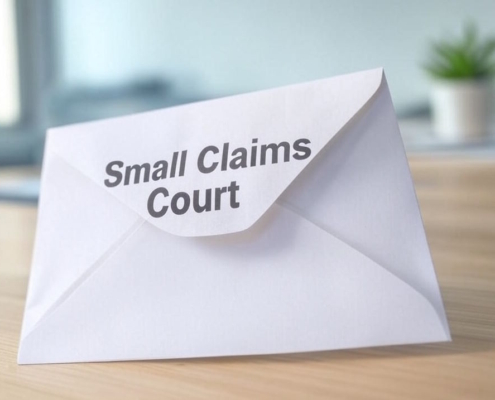Bank Reconciliation Statements: What Are They?
In order to verify that the money in the bank matches what’s in the books, businesses create bank reconciliation statements. If there are differences between the two, the statement explains why. Internal tools like bank reconciliation statements can help with things like tax and financial reporting, as well as finding mistakes or fraud.
How to Read the Bank Reconciliation Statement
The act of comparing two separate records is known as reconciliation. If there are discrepancies between the bank and book balances of your business, you can find out why with the help of a bank reconciliation statement.
Here, all transactions impacting a bank account over a given time frame are part of the reconciliation. When there are differences, it’s time to fix or modify something.
A bank reconciliation statement can be used for these other things as well:
Recognizing Accounting Mistakes
Bank reconciliation statements verify the processing of payments and the deposit of cash collections into the bank. It is common practice to review bank reconciliation statements for typos, duplicate entries, and unintentional inconsistencies. Mistakes may have an adverse effect on tax and financial reports. If the books aren’t balanced, a company’s tax bill could be over or underpaid.
1. Anti-Fraud Measures
If you suspect fraud, theft, or loss, review your bank’s reconciliation statement. A check that has been altered, for instance, may result in a payment that is greater than what you had anticipated for that check. If you happen to come across this while balancing your bank accounts, there are steps you can do to stop the fraud and get your money back.
Nevertheless, there is usually a time constraint, like 30 days from the date of the statement, within which you can discover and ask for the correction of mistakes.
2. Controlling Risk
A business or other entity’s financial statements reveal its state of health as of a certain date. Investors can make better choices with reliable financial statements. Companies can use the statements to better understand their cash flows, which aids in strategic planning and decision-making.
Companies usually have their reconciliation statements processed by an accountant once a month, if not more frequently. Bank reconciliation software can automate the process, which helps to minimize human error. It is important to ensure that no staff or employee is able to access funds through deposit, accounts payable, or electronic fund transfer authorization while reconciling bank accounts.
5 Steps for Conducting a Bank Reconciliation
You will need your company ledger together with your bank statements for the current month and the months prior to it in order to successfully complete your bank reconciliation. A basic spreadsheet will do the trick, but an online template can be helpful as well.
All you have to do is follow these simple steps:
- Take a look at your company’s ledger or accounting system’s record of all cash deposits, payments, and balances, as well as a copy of your bank statement for the time. Take the previous month’s closing balance as a starting point. That is the number you will begin with.
- Check all outgoing funds, including checks, transfers, and fees, against your bank statement. A leger or system list should contain all of the items in the statement. Verify the amounts recorded by the bank with your deposits and cleared checks. Then make a note of the item that is either missing or wrong.
- Take a look at the various categories of bank transactions that contribute to the account balance, including interest, transfers, deposits, and bank adjustments. You should also make sure that your ledger or accounting system reflects each positive transaction. Then make a note of what’s missing.
- After you finish reconciling your bank statements, you should see that the balance in your accounting records (after making any necessary adjustments) is the same as the balance in your bank statements. If the discrepancies persist, you should look into potential oversights in your recording or mistakes made by the bank.
- There may be a large deposit or withdrawal from the previous month on your current bank statement if you discover a large-dollar-amount discrepancy between the company and bank ledgers.
Fixing Inconsistencies in Bookkeeping and Banking
If there are inconsistencies with the bank statement, it may be necessary to adjust the cash account balance in an entity’s financial records. When this occurs, journal entries document the change to the book’s balance. The ending balance of the bank account should match the book balance after adjusting for fees and interest.
1. Fees
It is common practice for banks to automatically deduct a maintenance fee from customers’ bank accounts. To account for fees deducted, a journal entry is prepared when preparing a bank reconciliation statement.
2. Interest Earned
An adjustment is also necessary for interest earned. A bank account will automatically receive interest deposits after a specific amount of time has passed. As a result, the bookkeeper for the business makes a note to increase the amount of cash on hand. Following the completion of the necessary corrections, the ending balance of the bank account should match the book balance.
Bank Reconciliation Statement Example
A bank reconciliation statement compares the transactions shown on a bank statement with those recorded in financial records. In cases where there are differences, businesses can trace the mistakes back to their origin.
Assume, for the sake of argument, that Sunshine Co.’s books showed an ending balance of $500,000. But there was a $520,000 ending balance on the bank statement. Based on their investigation, Sunshine Co. determined that the bank had not received a vendor’s check for $20,000. In addition, two $25 service fees and non-sufficient funds (NSF) checks were not processed that month.
The accountant is able to detect these mistakes on a monthly basis through the reconciliation statement. Having identified the errors, the business can now take corrective action and restore financial stability.
What are some typical issues that arise during bank reconciliations?
When reconciliations don’t happen very often, it can be hard to deal with fraud or mistakes right away because the information needed might not be easy to find. In addition, discrepancies in the company’s financial records can arise as a result of late recording of transactions and application of bank fees and charges.
In a bank reconciliation, where do NSF checks end up?
In the bank reconciliation statement, a line item for adjusted book balance is used to record non-sufficient funds (NSF) checks. The amount of the NSF is taken out of its balance.
What is the significance of bank reconciliation?
It is possible to find mistakes that influence financial reporting and estimated tax payments by doing a bank reconciliation. Additionally, it aids in spotting, preventing, and stopping fraud.
What is the recommended frequency for bank statement reconciliation?
Your company’s unique requirements will determine the optimal frequency of bank reconciliation. Upon receiving their monthly bank statements, some businesses choose to balance their accounts. On the other hand, daily or even more frequent reconciliation may be necessary for companies with a high transaction volume or elevated fraud risk. Finding a pattern that works for your company’s specific requirements and financial transactions is essential.
You can automate the downloading and categorization of your bank transactions by connecting your bank account to your accounting software. You should still manually verify everything from time to time to make sure it’s accurate and free of bank errors, but this can help you save a little time.
In Conclusion
To identify mistakes, omissions, or fraud in a bank account, businesses and accountants use reconciliation statements. Reconciling accounts is a simple but absolutely crucial step in managing your cash flow.
When prepared on a regular basis, reconciliation statements aid businesses in spotting mistakes in their cash flow, providing investors with accurate information, and accurately planning and paying taxes. Not only that, but they can stop mistakes from getting worse and spot fraud before it does major damage.































